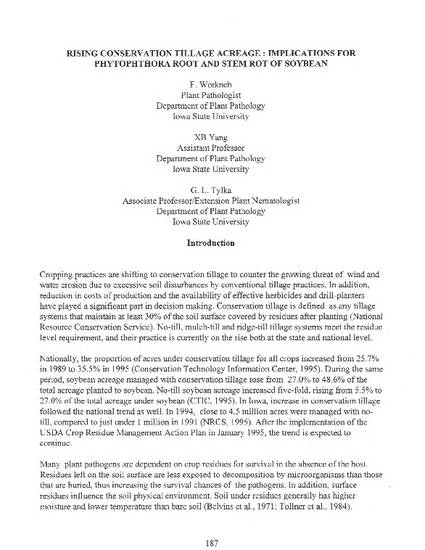
Presentation
Rising Conservation Tillage Acreage: Implications for Phytophthora Root and Stem Rot of Soybean
Proceedings of the Integrated Crop Management Conference
Start Date
30-11-1995 12:00 AM
Disciplines
Description
Cropping practices are shifting to conservation tillage to counter the growing threat of wind and water erosion due to excessive soil disturbances by conventional tillage practices. In addition, reduction in costs of production and the availability of effective herbicides and drill-planters have played a significant part in decision making. Conservation tillage is defined as any tillage systems that maintain at least 30% of the soil surface covered by residues after planting (National Resource Conservation Service). No-till, mulch-till and ridge-till tillage systems meet the residue level requirement, and their practice is currently on the rise both at the state and national level.
DOI
https://doi.org/10.31274/icm-180809-506
Citation Information
F. Workneh, X. B. Yang and G. L. Tylka. "Rising Conservation Tillage Acreage: Implications for Phytophthora Root and Stem Rot of Soybean" (1995) Available at: http://works.bepress.com/gregory-tylka/237/
